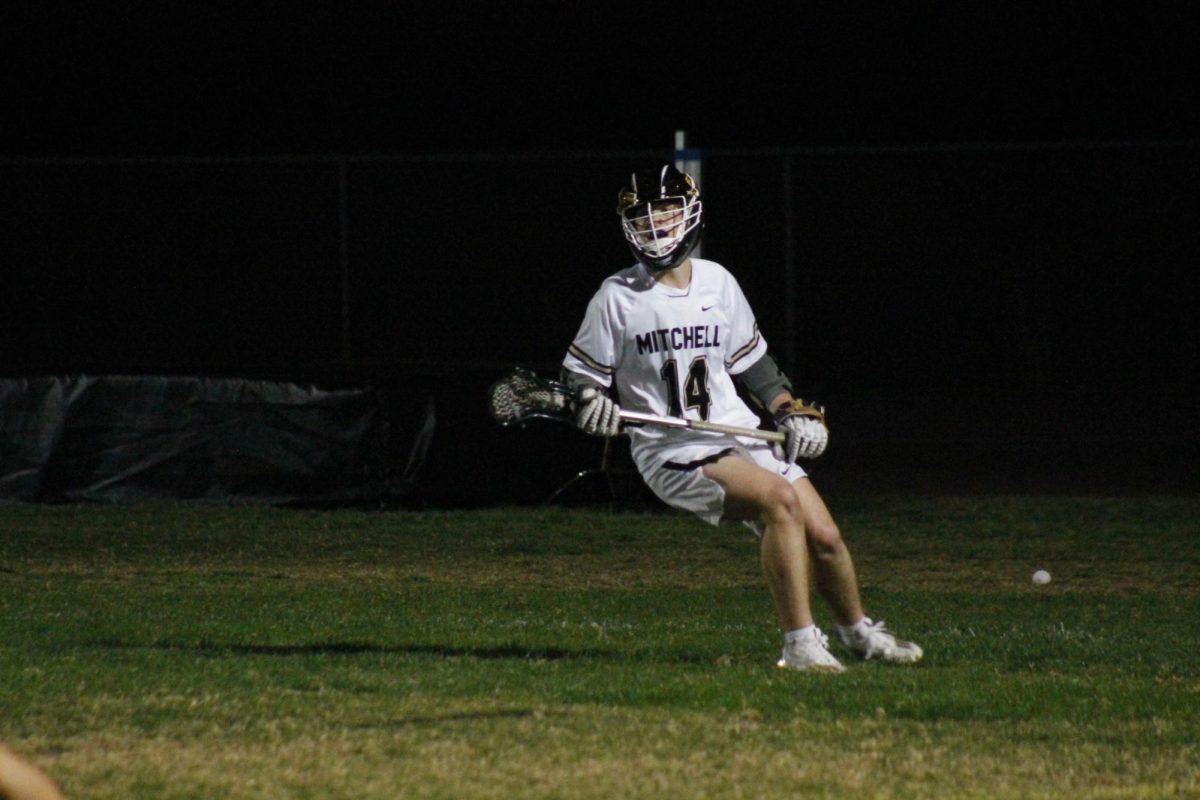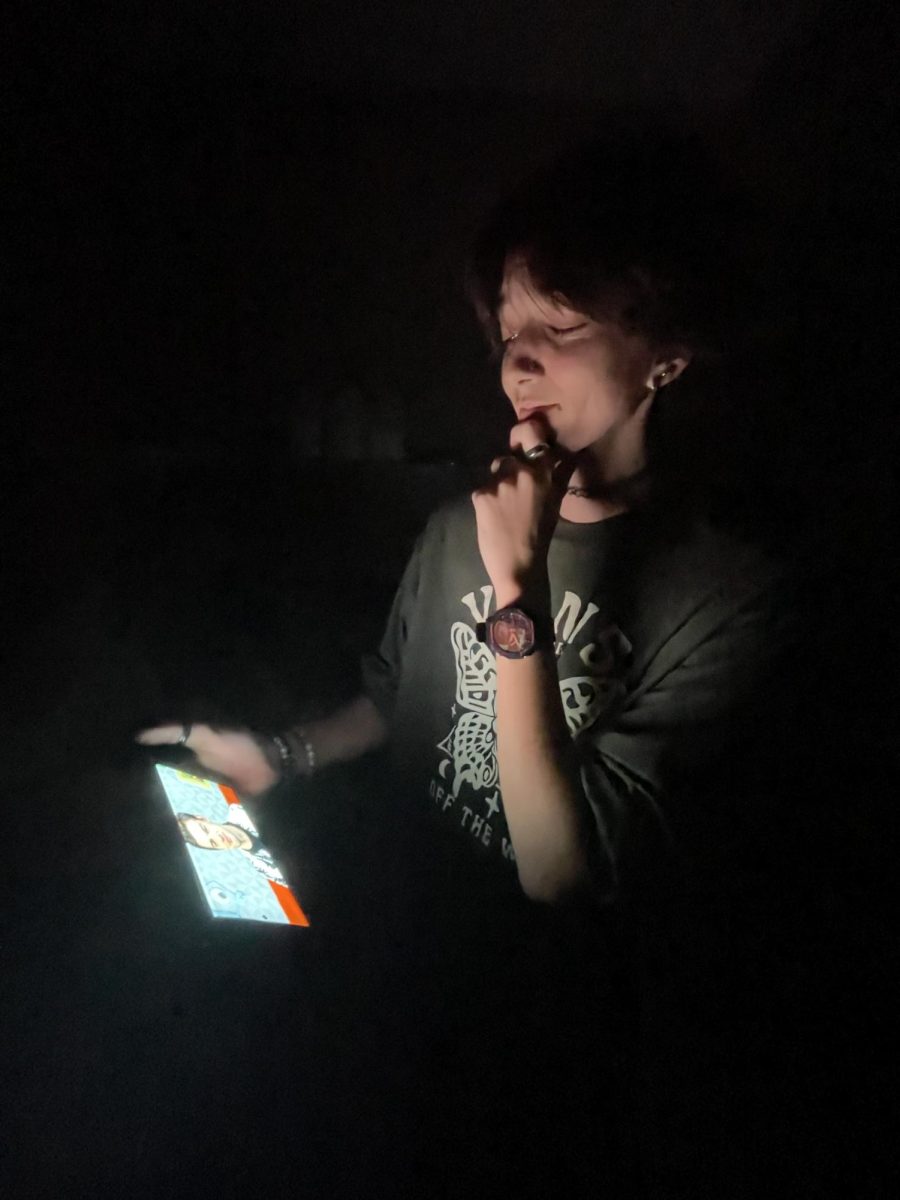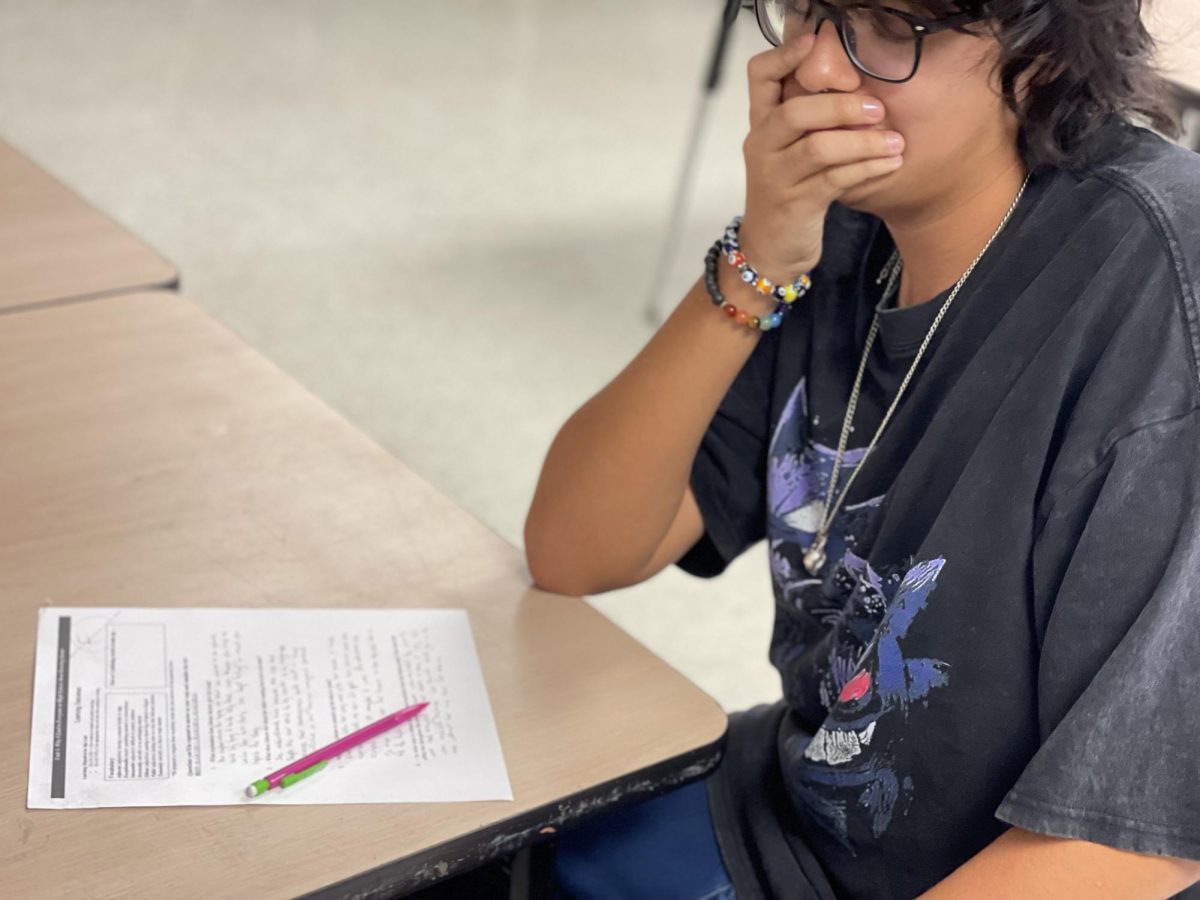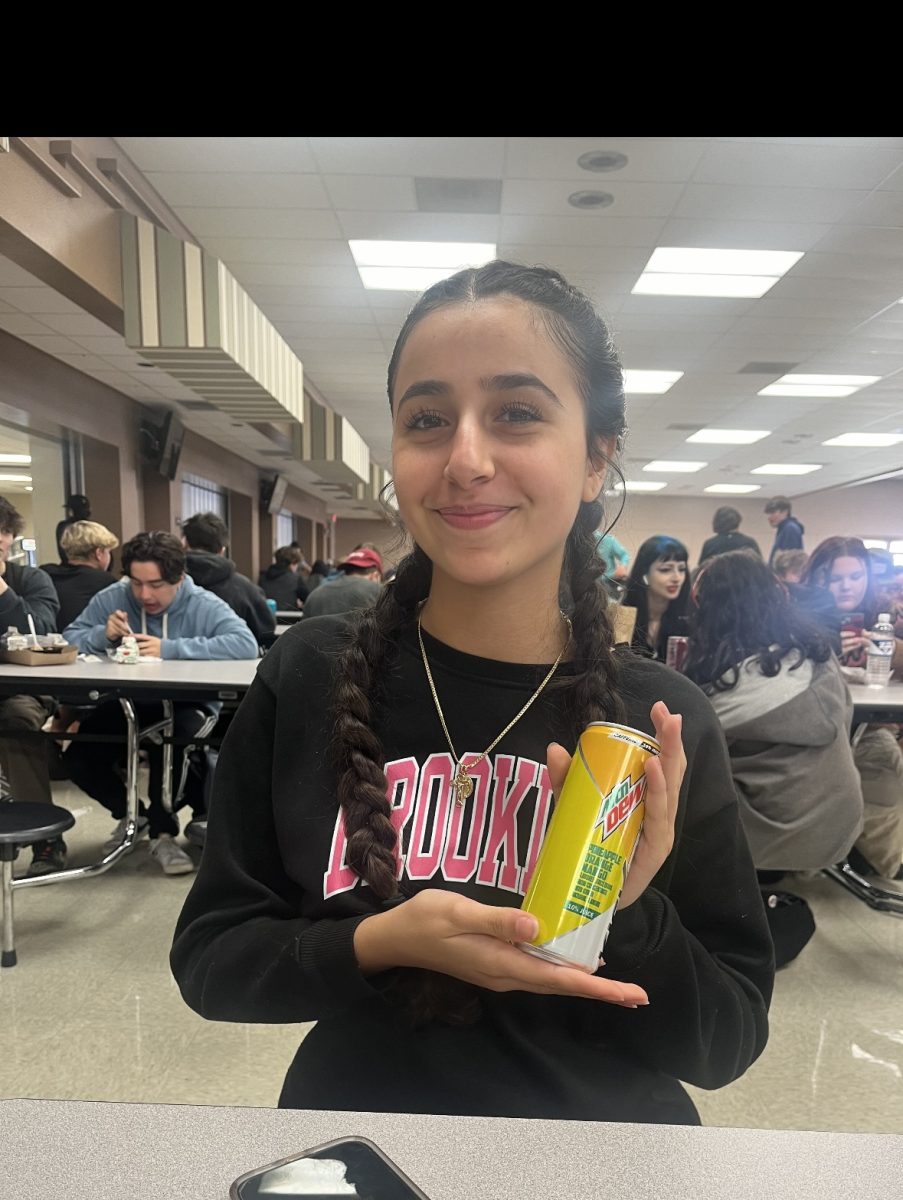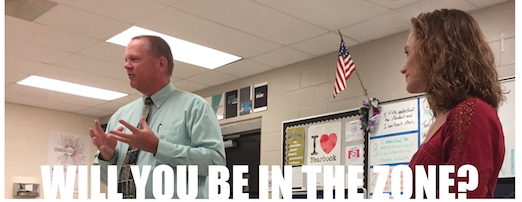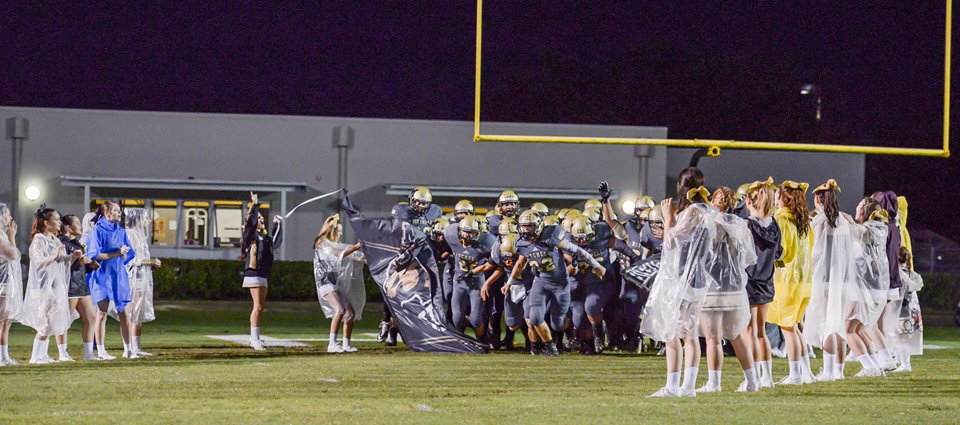News
Holiday Lights in Tampa Bay
http://www.tampabay.com/things-to-do/events/10-places-to-see-christmas-lights-in-tampa-bay/2304585
Red or Blue: Which one are you?
By Max Trettin
During the 2015-16 school year, Isabel Bradley (‘18) noticed around the campus. She brought it upon herself to create the Young Democrats Club.
“A friend and I were walking around campus, and people weren’t educated on the platforms of political issues. They knew who they liked, Hillary Clinton or Donald Trump, but they didn’t really know why. When we tried to talk about it, they couldn’t explain it. We started the club because we wanted to bring more political education to the campus,” Bradley said.
Grace Phillips (‘18) and Paulina Keim (‘18) got together and
also realized the lack of political clubs in the school.
“It got started when Grace and I were taking the world history exam and we were thinking that it would be really cool for a Republicans club on campus, and asked Ms. Hampton if she wanted to be the sponsor,” Keim said.
The students recruited advisers Ms. Heather Daniel (Young Democrats), and Ms. LuAnne Hampton (Young Republicans). Friends, yet political rivals, the advisers sought to aid Bradley and Phillips in the creation of the clubs.
“[Ms. Daniel] wanted to help better the education in politics for other students. Within the club we’re going to talk about political topics, we’re going to talk about both sides; just kind of get into discussion of what we think about both sides, how to stay open-minded, and just learn more about each party,” Bradley said.
As presidents of their clubs, Bradley, Phillips and Keim endeavor daily to spread political beliefs throughout the campus. When the presidential election is complete by mid- November, both the Young Republicans and Democrats planned to continue meeting.
“We’re going to get more involved in the community.
One of our big focuses are the veterans in our area, and we
also want to get involved in the Pasco Republicans, like the older Republicans, and try to help them do their thing. We’ll get involved with local politics, and just kind of serve our community in any way we can,” Phillips said.
Both the Young Democrats and Young Republicans share similar goals, to expand knowledge of politics throughout the campus.
“We’re still going to be talking about popular topics within politics. Whichever president gets in, we’ll talk about it.
We’re going to have education discussions and learn more about who our president is and what the platform is, and how we can make our future better,” Bradley said.
To participate in the initiatives presented by the Young Republicans and Young Democrats, students can talk to the advisers. The Young third Wednesday of each month in room 705, and the Young Democrats meet the second and fourth Friday of each month in room 811.
In addition to this, they have debate parties and discussions where they watch the debate and discuss it amongst themselves. The approximate participate in both of these clubs strongly encourage students to get more involved in local politics, and their community in its entirety.
The Melting Pot
By Josh Wagner
America, often referred to as the “melting pot” of the world, serves as a home to people from different countries, races, and religions. From its beginnings, this country has been a place of immigration, diversity, and cultural uniqueness. Students at our school decided to bring that diversity here, and The Melting Pot Club was born.
“I noticed that our school wasn’t really diverse at all, and I thought it would be cool to have a club that promotes culture, different backgrounds, and diversity,” Nurah Koney- Laryea (‘17), founder of The Melting Pot Club, said.
This recently established club month in room 811 at 3:00 p.m., to discuss, present, and plan out their actions.
“[At each meeting] discuss represents and ways to get support for that country. At the end we take a vote, and whichever country gets the most votes is who we donate all the money we have collected throughout the year to,” Hunter Tobey (‘18), a Melting Pot
The club not only promotes student awareness of many other cultures, but also helps countries that need support and a helping hand.
“The main thing we are going donate, not necessarily just straight money, but supplies: medical supplies, food, stuff like that,” Tobey said.
The Melting Pot Club is stewed up with students and numerous cultures. The club has students representing Puerto Rico, India, Greece, Ghana, and many more.
“I am Greek-Italian, but I like to show my Greek side more because it is a less represented culture at the school,” Tia Marchiselli (‘17) said.
The club is a way for students to shed light onto their culture and heritage, which may not be as easily shown in the school otherwise. The Melting Pot Club offers many ways to get involved in something other than schoolwork or sports, discovering cultures apart from one’s own.
“I think joining the club is a good idea if you want to learn more about other cultures, other backgrounds, and diversity,” Koney-Laryea said.
Students that want to know more about joining the club can see Ms. Daniel in room additional information.
Will you be in the Zone? An interview with Chris Williams regarding the potential rezoning of Pasco’s west side secondary schools.
September 7, 2016
by Raleigh Illig
Q. Please introduce yourself.
A. I am Chris Williams, the Director of Planning for the district. Our department is responsible for anything to do with land. We are also tasked with projecting how many students will attend our schools 5 years from now, 10 years from now, 20 years from now, and to use that information to set the budget for next year. In December, I have to project how many students are going to be here next year, and the budget hinges on that. We also have the task of handling rezoning when that’s applicable. That’s what we are looking to do here in this area.
Q. Who made the original decision to form a committee to rezone students out of SSMS and JWMHS? When and how was this decision made?
A. The decision to move forward with rezoning is made by the superintendent and staff, including myself. We look at a variety of factors such as current capacity of schools, current and future growth, how much growth can the schools currently receiving that growth absorb, and when future capacity will be built and where. Once the decision is made to move forward with rezoning then we form a rezoning committee.
Q. Many students attend JWMHS for only part of the school day, electing to take online classes from home and/or attend PHSC for Dual Enrollment courses. Has the student enrollment data period-by-period been taken into consideration when deeming JWMHS overcrowded to the point that rezoning was necessary?
A. Period-by-period enrollment was not taken into consideration. Typically there is not a large percentage of students doing this. Prior, to moving to a 10-period day on the Wiregrass Ranch High School campus, we actually tried to do a “hybrid” model. The plan was to have a significant number of students sign up to take classes online at home and come to campus for part of the day. This would free up more space on campus. We began taking sign-ups and could not get enough students signed up to make a difference. We therefore implemented the 10-period day plan currently in effect at Wiregrass Ranch High.
Q. Has the district considered separating the start/end times of the middle and high school so that the traffic at drop off and pick up can be alleviated?
A. There is a balance between sharing busses with middle/high school students and having separate start times to help with traffic. Traffic is certainly an issue at SSMS/JWMHS but not the sole reason for doing a rezoning. The main reason is due to general overcrowding on campus. Traffic is just one of the issues. The change in start times is evaluated every year and is something that still may very well change in the future.
Q. Do you know who will be on the committee to determine the rezoning?
A. Every time we do a rezoning we set up a boundary committee and that boundary committee is made up of every principal from all the schools that potentially will be affected. Each of those principals picks two parents to serve as representatives on the committee. I always encourage the principals to pick two parents who are going to be objective and come in and look at data and make decisions based on that data and maps and things that we look at. And [the principal should also pick] parents that are going to be in areas that are potentially going to be rezoned. Unfortunately, we can’t pick a parent from every area that potentially could be rezoned because then our committee will be 100 people. It gets very difficult to do that. So we pick parents representatives, and we try and pick them from a variety of communities that may be affected. Also we have district staff like myself and area superintendents and people from the superintendent staff as well as somebody from the transportation department, as well as from our exceptional student education department. That’s who makes up every committee every time we do a rezoning.
Q. Who will be “grandfathered” into the schools?
A. Absolutely for sure, next year’s seniors will be grandfathered. We will talk about whether we can or would want to try to grandfather others in as well. It really comes down to numbers, because if we can’t get an over-crowded school down, say we grandfathered next year’s 9-12th graders or next year’s 10-12th graders, but your school is still growing and is over capacity, then it’s probably not going to work. But for sure, next year’s seniors [will be grandfathered in].
Q. Who will make the decision about grandfathering?
A. The committee will take a look at it and they will actually come up with a recommendation. That’s not only the grandfathering, but the committee will figure out where they think the lines should be drawn. So they come up with that recommendation and there’s a process involved with that, where we get parent input and feedback on all those decisions, but ultimately the committee will make a recommendation that is going to go to the superintendent and that will ultimately go to the school board. So just because the committee recommends it, ultimately it’s the school board who determines that. That’s actually called creating a rule. They hold two public hearings, so two different school board meetings, a first reading and a second reading of the proposed boundary and they will also talk about the grandfathering. So there are two opportunities to go before the school board to talk about your thoughts or concerns.
Q. Do you know which areas or neighborhoods will be affected by the rezoning?
A. We do not, because that is what the committee is tasked with, looking at those particular options in all those different areas. Obviously the closer to the school you are, the less likely you will get rezoned, but proximity to the school isn’t always the driving factor. For example, if somebody lives 4 miles away from Mitchell High and lives 5 miles away from River Ridge, that doesn’t necessarily mean you will automatically go to Mitchell High because there are other factors that go into making the boundaries.
Q. So you’re saying that you don’t know of any neighborhood that will be safe from the rezoning?
A. No, I mean I wouldn’t commit to that, no. Because there are several criteria they look at.
Q. Are there going to be any new high schools that are going to be built?
A. There will eventually, right now we are actually building a brand new high school on Old Pasco Road in the Wesley Chapel area, and that’s going to open next year and will help relieve Wiregrass Ranch High School, and Wesley Chapel High School. Also we don’t have the money to build a new middle school on that same site, we will in the future but we don’t have the money, so actually that high school we’re building is going to open as a 6-12 school next year. That is going to allow us to relieve Wiregrass Ranch High, Dr. John Long Middle, Wesley Chapel High, and Weightman Middle, and potentially a little bit off of the eastern end of Sunlake and Rushe. So that’s going to provide a lot of relief, because over there, there are no schools surrounding them that are under capacity so it’s not like we can rezone, so we’re building a brand new school. Over here we will eventually build a brand new school. We don’t have a site yet but we’re working on a site, and that site will be expensive. The new high school on Old Pasco Road costs 65 million dollars to build. We don’t have another $65 million to build a new high school. And also one of the biggest things people complain about with government is waste of money, so it’s difficult to justify to the tax payers to build a new high school to relieve Mitchell or Seven Springs Middle when there are under crowded schools surrounding it. So that’s one of the challenges we deal with. It’s difficult to do that because some people could say, “why are you wasting my tax payer dollars on a new school when you could do some rezoning and balance those populations out?” So there are plans in the future to build a new high school. But another thing to think about is, yes Mitchell High is overcrowded. You are overcrowded by about 350 students or so. Sunlake is over crowded by 200 or so students, so if you build a new high school in between, which is where we’re looking for a site, and say you built a new school for about 1800 students, how many do you have now? Yes, you helped Mitchell, so maybe Mitchell is 1,400 kids, and maybe Sunlake is 1,400 kids, and the new school is 1,000 kids. So now you have 3 schools that are way under capacity, and you have to think about all the costs involved and all the overhead involved with running 3 schools with administration, and utilities, and it gets very expensive to run schools that are only half capacity.
Q. As you look forward 5-10-20 years do you envision a date for that new high school? Is it 5, 10, 20 years away?
A. Well it’s at least 5 years away, probably closer to 10 because again, we look at a lot of things. It depends on growth, but it also depends on budget. The challenge we face as a district is it’s not just this area we have to worry about, but all along the 54 corridor, all the way from here to Wesley Chapel and into Land O’ Lakes. Wesley Chapel is a high growth area, and I know as soon as we build that high school it’s going to be at capacity, but it’s also going to have middle schoolers in it and those schools are all going to be right at capacity again. And so were going to have to be like, okay, where’s the next school going to be, and we have to keep up with the elementary schools as well, so we’re building a new elementary school to relieve Oakstead Elementary and Odessa Elementary but as soon as we build that one it’s not going to be long before you have to build additional elementary schools.
Q. Where does the money come from for the new schools?
A. People don’t realize this but the school district is very restricted on how we can get money. The school board can’t just vote to raise taxes to get more money, they’re not allowed to do that, so primary sources for capital dollars, and when I say capital dollars it means dollars that go to new schools and maintaining facilities. That’s different from operating dollars, because operating dollars go to paying salaries and the expenses for running a school, and they’re two different pots of money and we can’t mix them. So the capital dollars for the new facilities comes from property taxes, the Pennies for Pasco sales tax, and from some state dollars they give us, not enough, and also something called impact fees. The state caps how much property taxes we can collect; impact fees are whenever someone builds a new home in this area, they have to pay an impact fee. There’s a variety of impact fees. The county collects impact fees for new parks, new emergency responder stations, new roads, and we collect them for schools. So for every new house that is built we collect about $4800. Every year we are collecting $9 million in revenue for a new facility, so if you think about how much that new high school costs – $65 million – $9 million doesn’t go very far, and the property I’m looking at for a new high school is probably going to be about $5 million, just for land. So you can see $9 million per year doesn’t go very far, so the district can’t automatically say we want to raise school impact fees, it has to go to the County Commission and the County Commission has to say yes. So we are planning on taking a revised impact fee to the County Commission within the next year, and we hope that they say yes but we don’t know that for sure. By the way, currently as far as capital debt, we are over $400 million in debt, that’s half a billion dollars almost. So we can’t just go borrow money and build new schools when we are that much in debt, and that’s from all the growth from the last 10-15 years. Some people say, ‘Why can’t you just go build a new school?’ We’d love to, but it’s just not quite that easy all the time.
Q. What other schools might gain or lose students?
A. Seven Springs Middle, Mitchell High, Paul R. Smith Middle, Anclote High, Gulf Middle, Gulf High, River Ridge Middle, River Ridge High, and Ridgewood High. Not necessarily all of them, but certainly the committee will look at a variety of options and those are schools that potentially could be included. This mainly affects middle and high schools; the only thing that could affect elementary would be the feeder patterns. We like for the entire elementary school to go to the same middle school, and then that middle school to all go to the same high school, so you can keep it pure. We want to do that but it’s not always possible, and so there are some elementary school that are split, so that half the population goes to one middle school and the other half goes to another middle school, and so potentially drawing those lines could effect those patterns.
Q. So as of right now Fivay and Hudson are not in the discussion to gain students?
A. Correct. We’ve talked about it because they are under capacity, too. Then you get into this domino effect where you’re shifting students, and we decided to not go that far.
Q. So for example, kids wouldn’t go from RRHS to Hudson if they lived that far north?
A. Right. Because we did make a boundary when we opened Fivay. We did a lot of tweaking back then when we opened Fivay High School.
Q. And you mentioned Ridgewood?
A. They are on the northern border, so depending on what we do with Gulf, potentially, we could shift some students from Gulf to Ridgewood, because Ridgewood is under capacity too, which would allow Gulf to take some students from other schools, but again we’re not sure. But that would be something to look at.
Q. If current Mitchell students are zoned out of our district, will they be able to apply for school choice to come back to Mitchell?
A. There’s always opportunity to apply for school choice. The question remains whether you’d get in or not. Some people will say if you stop school choice at Mitchell you wouldn’t have over crowding. That’s not the case. If it were that easy we’d do it. But we also always want to provide opportunities for kids who have a mom or dad that teaches at the school, and they want to school choice in, we always want to give them that option. Or if they want to be in a certain program that’s not at other schools, we want kids to be able to choice in. Just like we want kids to be able to choice in for the engineering program at River Ridge, or the IB program at Gulf. If Gulf High were overcrowded, we’d still let people choice in for the IB program, or whatever program is around in that area. Now when schools are overcrowded, certainly school choice becomes very limited. But, depending on the reason you’re asking to get in – if it’s a program your zoned school doesn’t have, or if it’s because your mom or dad teaches here – those opportunities will still be there. Or if there’s some hardship reason you have to do that, all those things are looked at. People are surprised to find out that all these people choice in to Mitchell High, but we looked at a map, and as of last year, there were about 150 students living outside of Mitchell’s boundary who were attending school at Mitchell. But there were also about 150 students living in Mitchell’s zone attending school somewhere else for whatever reason. So it is about a wash when we looked at it last year.
Q. Students currently here on school choice at Mitchell will have to reapply to school choice if there is a rezoning?
A. That’s correct. Any time we do a rezoning, for any school that’s affected by the rezoning, school choice is reset. Everybody who wants to go to Mitchell that does not live in the new zone has to apply. I am not sure if seniors will have to reapply for school choice, but even if they had to apply, they would get it, because if you’re going to be a senior, you’ll be grandfathered in.
Q. What about school choice for athletes?
A. I don’t know the answer to that, because I don’t know how the state changed the rules. I’m not the school choice guy.
Q. What will happen to other schools if they become too crowded from the rezoning process?
A. Those are the things that the committee looks at. There are those who would say, ‘Rezone all the new growth, like Starkey Ranch and Asturia, to – let’s just say – River Ridge.’ Well what the committee has to look at is that will eventually be 700 students. River Ridge is under capacity, but not by that much. So then the question is, can River Ridge handle that, how many years will that take, and so if we’re going to do that to RR, well, we probably ought to look at moving some students out of River Ridge into – let’s say – Gulf. But what about the people who are now being moved out of River Ridge into Gulf, who raise their hand and say, ‘Well I’ve been here for 15 years. Why should I move out of the River Ridge boundary and go over to Gulf just to make room for new folks?’ And so those are all of the challenges that the committee has to look at and try to figure out how to balance the population so we’re not just moving the problem that Mitchell and Seven Springs have to somewhere else, but trying to figure out if River Ridge takes some of the future growth, and maybe Mitchell takes some of the future growth. And in order to do that we might need to move a few kids out of River Ridge and a few kids out of Mitchell and move them around to Anclote and Gulf, and maybe that’s the best solution. Maybe it’s not. I don’t know. That’s what the committee will take a look at.
Q. There are some people who buy their houses specifically so they can be in a certain school district because they like the way that district is run. What if there is a new person coming in and buying in so that they can go to Mitchell, and then all of a sudden where they live is rezoned for River Ridge. How would you take those people into consideration?
A. That is a great question. That is the most popular thing I hear from everybody. ‘I bought my house so I could go to this school.’ Whether it’s Mitchell or Seven Springs. Usually I tell them in a nice way, that I understand that they bought their house to go to Mitchell High. Unfortunately, so did 2200 other student families. And so, at some point we have to figure out how to rezone people. We, as Pasco County, cannot guarantee that when you move into Pasco County you are always going to stay in the same school…. If you tried to make that happen, how would that look? ‘Okay. Everybody who moved to this school district gets to stay there.’ How is that going to look as far as trying to draw a boundary? Somebody might say, ‘I have been here for 12 years. I should be allowed to go to Mitchell High.’ And so…I am from Pasco County. I said, ‘I have been here for 50 years. I live in Dade City. Does that mean I can take my son, who goes to Pasco High, which is a good school, by the way, and now displace somebody at Mitchell High, because I have lived in Pasco County for 50 years? Would that be fair? Those are the kinds of things you have to think about. Yes, I understand the argument, ‘I’ve been here for this long and I want to go here.’ I get that. But at some point you still have to do some rezoning.
Q. There are two major developments right here in the Trinity area, one right across the retention pond in the Mitchell field across from Target and Wal-Mart, and the other across the street behind the church, that right now are projected for lots and lots of homes. Do you have any idea of the timeline of those construction projects beginning? And if those will be a factor in this rezoning, or will we have the potential for Mitchell to be rezoned yet again in 5 or 10 years?
A. Certainly those developments are moving forward. They are working on approvals, and we are actually meeting with one group tomorrow [September 8th] to talk about a future sidewalk to help connect the community with some of the schools. So we would see those communities….not necessarily the one across the street, but certainly the one just to the north of here, Mr. Mitchell’s property, we would see that coming online in the next five years. Now keep in mind that the houses don’t get built all together. They might get built 100 homes at a time. And certainly we’ll take a look at that and realize that that is part of the growth is coming. Part of our job is to figure out, based on how many houses are going to be there, how many high school students will live there, and how many middle school students will be there, and that’s part of future growth. And we can give people that number. That’s actually one of the factors in our boundary committee as well, is Future Growth and Capacity. So how much room do we need to try to leave at Mitchell to accommodate those students, along with all of the other students that are coming, and do we try to spread that out between Mitchell and Anclote and River Ridge? Or do we say, ‘Okay, it all ought to come to Mitchell.’ Well, if all is going to come to Mitchell, then we have to move more kids out of Mitchell to make room. And those are the things the committee will deal with. That’s part of the challenge.
Q. How will Reduction in Force be handled? [Reduction in Force, or RIF, is the process necessary to reduce the number of teachers at a school that drops in enrollment].
A. Let’s say, and again, we haven’t decided on a number, but let’s say that 400 students get rezoned out of Mitchell and are going to be spread out to other schools. Well, that’s 400 students worth of teachers that you are no longer going to need at Mitchell High. And so what happens is, Employee Relations sits down with me and your principal, and we figure out what number we think you’re going to be at next year, in terms of number of students. And then we figure out, based on that number, how many teachers you’re going to need at Mitchell High next year. And then based on that, how many teachers are you going to lose, and then there’s a process based on things with the Union, and seniority, and retirements, and maybe there’s a teacher who wants to transfer somewhere else, and then we see how many teachers are left that we have to move and transfer somewhere else. And those teachers would get transferred potentially to those schools that are receiving those 400 students. There is a process and it happens before the start of next school year.
Q. What factors will be used in determining the new zones?
A. Okay. So I’ve gone through a couple of them. One is Future Growth and Capacity, how much room to leave at all schools to take future growth. Because if a school is not going to take future growth we can kind of make sure it is pretty full, vs. a school that might take some future growth. We want to leave some room, knowing that it’s never going to be perfect. There might still be some overcrowded conditions. We also look at Feeder Patterns. We also look at something called Subdivision Integrity. And that means we try to keep neighborhoods together. Now, people have different definitions of a neighborhood. If you live in a little gated community, that could be considered a neighborhood. But if you go to a big community like Seven Oaks in Wesley Chapel, it’s got several little gated communities. So is Seven Oaks one neighborhood? Or is it several neighborhoods? And so, some people would have different takes on that, but that’s what the committee talks through. We also talk about transportation issues, such as proximity to the schools, and how long would it take to get from this home to this school, and how do we bus that particular student? Are there any things we need to be concerned about in terms of transportation? We also look at something called Planning Integrity, and that’s looking at the years out and when we would build a new school. We don’t want to be in a situation where we rezone folks next year, and then two years from now we are back at the table doing rezoning again. So I always make the promise that we are not going to rezone you in your different school types. In other words, we’re not going to rezone you as a freshman, and then two years later come out and rezone you again. I can’t promise that you might not get rezoned in elementary school, and then over here in high school. That might happen. But we are not going to rezone you twice during your high school career. And then Feeder Patterns is another thing we look at. Those are the main criteria we look at when looking at the boundaries.
Q. Is socioeconomic balance a factor in determining school zones?
A. Yes, that is one that we also look at. We can never achieve perfect socioeconomic balance but we do look at it and pay attention to how any rezoning may affect the balance of each of the schools.
Q. How often are zones changed?
A. Any time we build a new school. We have to make a zone for that new school, which means we pull from existing zones. And then the other way we do it is what we’re doing here at the Mitchell/Seven Springs zone. When we have schools that are overcrowded, and we have neighboring schools that are under-crowded, then let’s kind of balance those populations out. So when we’re building new schools, like between 2004 and 2010, we were building at least a new school, if not 2 or 3 every year, we were doing rezoning every year. Since 2010, we haven’t done a whole lot, but this year we are doing 3 of them. So we have the new high school/middle school being built, we have the new elementary being built, and then we have this one. It just depends on conditions.
Q. Do you know our projected numbers for next year?
A. I would have to look. We are waiting on new data to come in…..
If Mitchell High is at 2350, that means we need new portables. And there’s a cost involved with that. There are new fire codes. For example, we are at the point that we cannot add any more portables at Seven Springs Middle School, without adding what’s called a fire road. What that means is that the fire department wants to have at least some area that they can pull a fire truck and get back to that area. So you have to have a portable within so many feet of this fire road. So we can’t add any more portables. When you talk about a fire road, you’re talking about anywhere from about $250-300,000. So there’s significant cost to that. And if you have to have a fire hydrant, that’s another $100-250,000.
Q. And that’s the same reason why we wouldn’t build a second story or another building onto Mitchell?
A. Correct. We have talked about adding a classroom wing onto Mitchell and onto Seven Springs. And we potentially could do that and we might do that in the future. But what you have to be careful of, if your school was built for a certain number of students. A classroom wing would be nice because you wouldn’t have to be in portables, you could actually be in classrooms. But the thing we have to be careful of is your facility was built for so many students, and so that means your cafeteria, your media, your gym, your parking lot was built for that number of students. And so we can’t just keep adding classroom wings and portables and bring you to 3,000 students because your cafeteria can’t handle that, your gym can’t handle that, and your media can’t handle that. And the other thing we have to be careful of, after all the growth happens and everything is built out, and we have built all our new schools, we don’t want to have a situation where we’ve added a bunch of capacity onto Mitchell, and now Mitchell has capacity for, I don’t know, 2200 students, but you only have 1700. So we have to watch out for that, too.
Q. Is the district considering an audit of current students to find those students not on school choice that may live in other zones, but are attending Mitchell with falsified addresses?
A. The problem is there are a lot of legal issues with that. We have to be careful and look at what we can do legally. So we’re working with our attorney on what the options are. But it also takes resources, but if anything else, we need to look at our procedures. I am not the registration guy, but I don’t know that we always ask for proof of address any time they switch schools. And so maybe that’s something, at a minimum, that we ought to make sure that they do that if they go from Trinity Oaks to Seven Springs, and when they go from Seven Springs to here. Again, I don’t know if that’s what’s going to be decided, but they’d have to talk about how they are going to do that year to year. You are taking it at face value that people are going to tell you when they move. From my understanding, when the school suspects a student of living out of zone, they send out a letter, and within so many days they have to return proof of address. And can people falsify that? I assume they can. But then the question is, if they give you that, at that point you’re pretty much done. Students will tell you an address, and parents will give you an address. But my thought is, if a minor gives you an address, and an adult gives you an address, what are you going to do with that? Legally you have to be really careful. There are some procedures we ought to shore up and think about.
Q. But even if there were 100+ kids here illegally, that wouldn’t negate the need for rezoning?
A. Correct. And the number of kids rezoned will depend on if we think all of that growth will come to Mitchell? Or are we going to try to spread out and maybe send some to River Ridge? Then maybe you don’t need to take quite as many out of Mitchell. The committee will take a look at that and figure it out.
Q. Is there anything else you’d like to add?
A. Sure. I have a guy who works for me. He is a GIS analyst. It stands for Geographic Information System. We have this really cool software where we can plot all the students on a map. And we can highlight a neighborhood and say, ‘Okay. There are 56 high school students who live there. And out of those 56 high school students there are 52 who go to Mitchell High. And so if we rezone that area, this is how many students it would affect.’ So anyway, he does these amazing maps. Our committee looks at lots of data, lots of maps, and they try to look at facts. I would say that certainly this rezoning may impact some of you. And that’s not and easy thing. I get that. Rezoning impacts families, and we understand that. Unfortunately, we can’t just keep putting more students into the same overcrowded schools, because it costs money and it creates traffic issues, and it creates problems at your school. And so we have to look at these rezoning. Try to be cognizant of what the real data is. I know people can get caught up in emotion, but the committee is trying to look at facts and data, and trying to make the best decisions for everybody, and keep in mind, that’s not an easy task. But they do a really good job.
Q. Is it a possibility that the committee might recommend that no rezoning take place for 2017-18, but rather we continue to deal with overcrowding?
A. This is ultimately up to the School Board so they could decide to do no rezoning. I don’t anticipate the committee recommending that, although they could. As we discussed in class, no rezoning means 50+ more students for the next few years, more portables (cost involved with that), more traffic, more lunches, etc. while neighboring schools remain under capacity.
Q. Once the committee makes its recommendation, it goes to a Parent Meeting. Traditionally, historically, have those parent meetings impacted the committee’s decision before it goes to the school board.
A. Traditionally, not. But let me clarify that. Because the committee usually does an exemplary job. Usually, anything that comes out of the parent meeting has already been discussed by the committee. Now, that being said, we are doing something new this year, and that is after the parent meeting, the committee will get back together and say, ‘Okay, did we hear anything that we didn’t discuss, or that would make us want to change the lines or change something different.’ And so then they might do that, and they might not. Again, usually the stuff they hear is what they’ve already discussed. But potentially they could. The other thing I would challenge you to do, and I tell parents this all the time. I get the fact that you don’t want to be rezoned. But if you don’t want to be rezoned, and you don’t think you should, show me a better solution that meets those criteria that we went over, that will relieve Seven Springs and Mitchell of overcrowding, that will spread out the populations and provide for future growth and capacity. Show us a better solution. I am all for looking at that. But the, ‘Don’t rezone me because I don’t want you to,’ I get that, but that’s not going to sway the School Board. That’s not going to sway the committee. What’s going to sway them is to come up with a better solution.
Thank you for having me. Any time you have questions I am happy to come back, and you can email me at [email protected].
Dates:
Middle School and High School Boundaries to be determined by Parent/Staff Committee
Boundary Committee Meeting #1
Location: Seven Springs Middle School
Date: October 5, 2016, 7:30am
Boundary Committee Meeting #2
Location: Anclote High School
Date: October 26, 2016, 8:00am
Boundary Committee Meeting #3 (If Needed)
Location: River Ridge High
Date: November 7, 2016, 8:00am
Parent Meeting
Location: River Ridge High School Performing Arts Center
Date: November 14, 2016, 6:00pm – 8:00pm
Boundary Committee Meeting #3/4
Location: To Be Determined
Date: To Be Determined
School Board Actions
First Reading: Date to be Determined
Second Reading: Date to Be Determined
Based on a True Story
by Shyanne Dove
Based on a true story. Those five words and seventeen letters change a regular horror movie into something much more. The wonder of a horror movie based on real events cause the hair on peoples’ necks to prick up. Surprisingly enough, a number of movies link to events in someone’s real life nightmare.
Older movies like, A Nightmare on Elm Street (1984), a film about American teenagers haunted through their dreams by a ghost with knives as fingers based its premise on people in the early 1980s who died of night terrors. Ravenous (1999), a movie about cannibalism during the 19th century, traced its origins back to Alfred Packer’s trial in 1874. Sentenced to 40 years behind bars, he went by the name Big Headed Cannibal. The movie The Zodiac Killer (1971), linked a serial killer to many murders of certain victims due to their birth months.
Newer movie releases present scarier real life horror stories, such as Stuck (2007), where a nursing home worker hits a man with her car. Instead of killing him, the woman leaves him badly injured and wedged in her windscreen, leaving him in the garage. In Monster (2003), a woman from Florida named Aileen Wuornosrom faced the death sentence for murdering six men during the 80s and 90s. The story based on Wuornosrom’s confession and her explicit details of the murders she described makes jaws drop. In Hard Candy (2006), a sinister, middle-aged man falls prey to his “prey” in this horror-thriller mash when he meets a young girl that brings quite the plot twist. The movie producer tied this film back to Japanese girls who lured businessmen into traps where they met their demise.
As terrifying as those stories seem, not all films provide enough evidence to be considered based on a true story. The Conjuring (2013) and Poltergeist (1982) rely on eyewitness accounts and provide little or no physical evidence to support a claim of truth.
Movies based on a true story definitely become more terrifying than entirely fictional tales. Whether haunted by a ghost or some other psycho chasing around prey, movies from true events get the watchers thinking, and sometimes that remains scarier than the movie itself.
Homecoming Football Frenzy
by Kelsey Williams


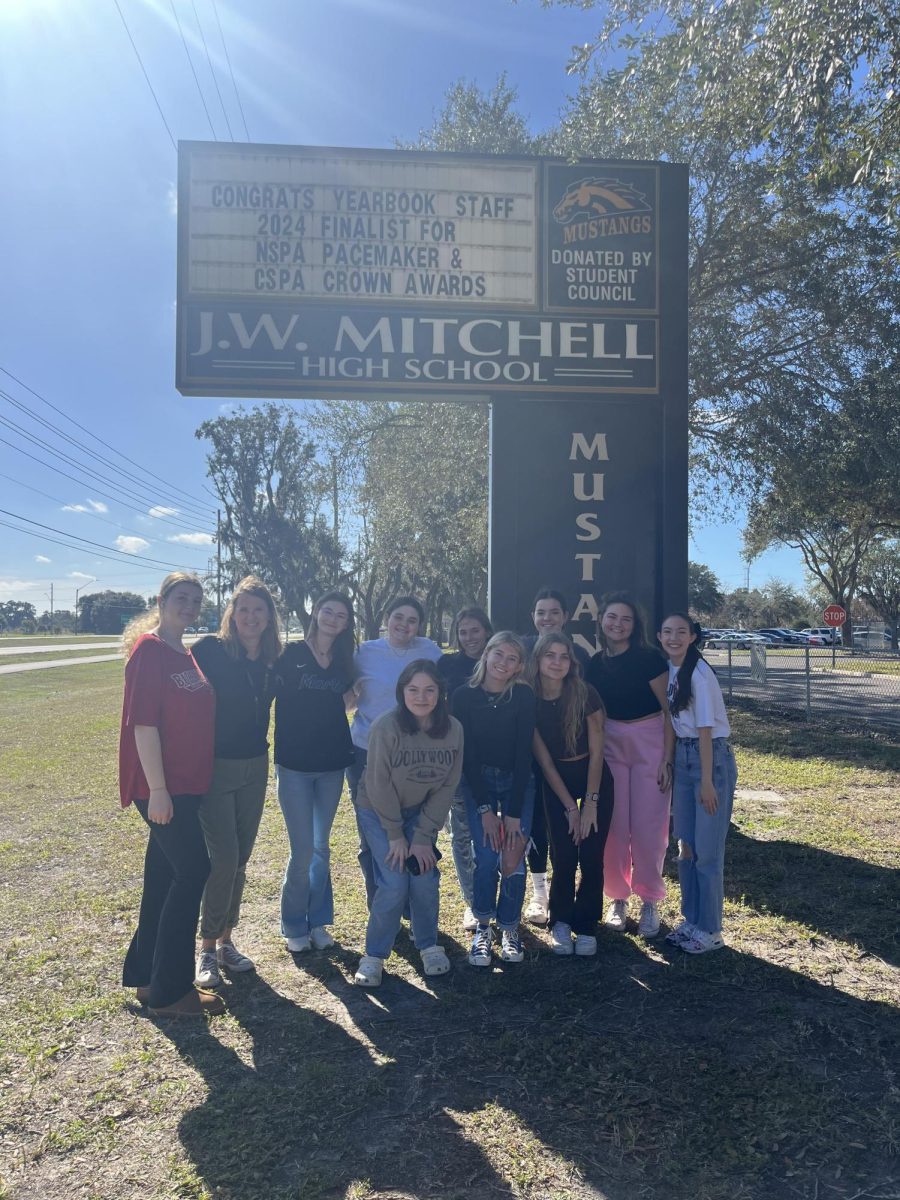

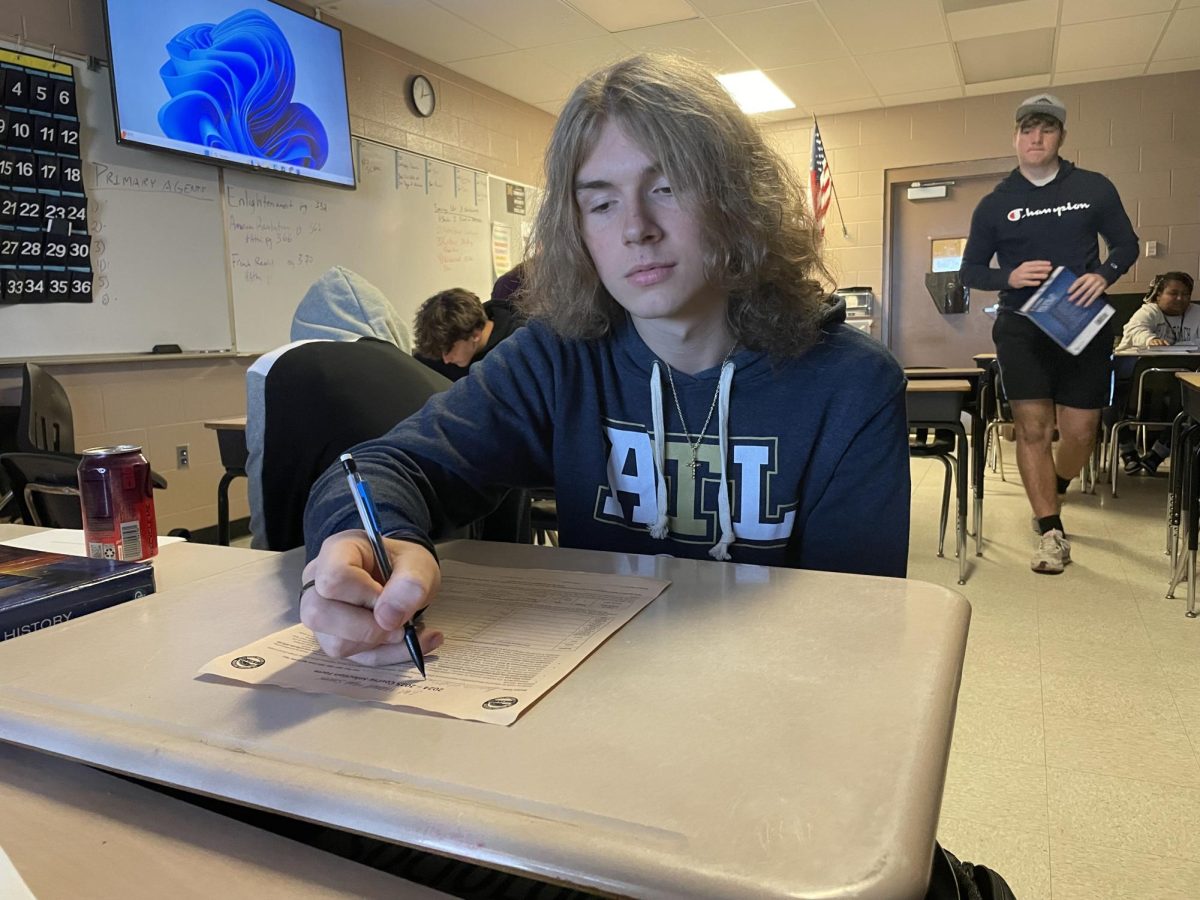


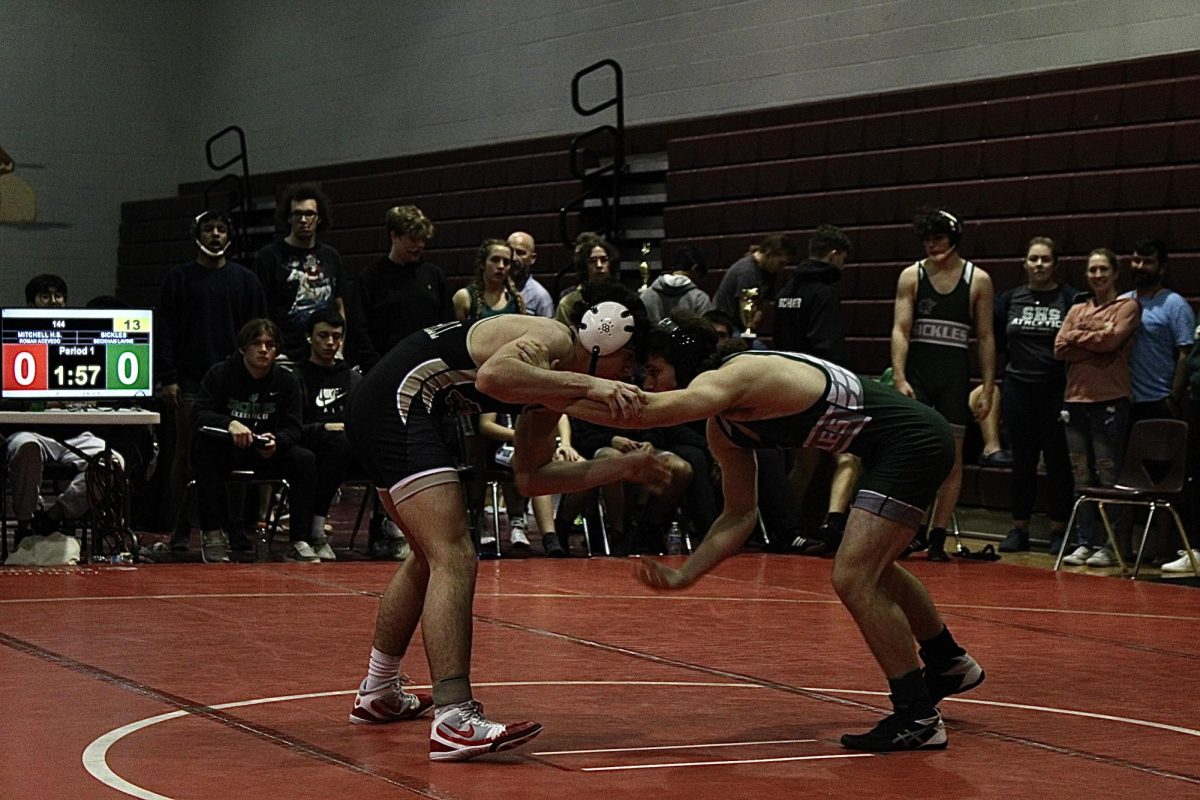
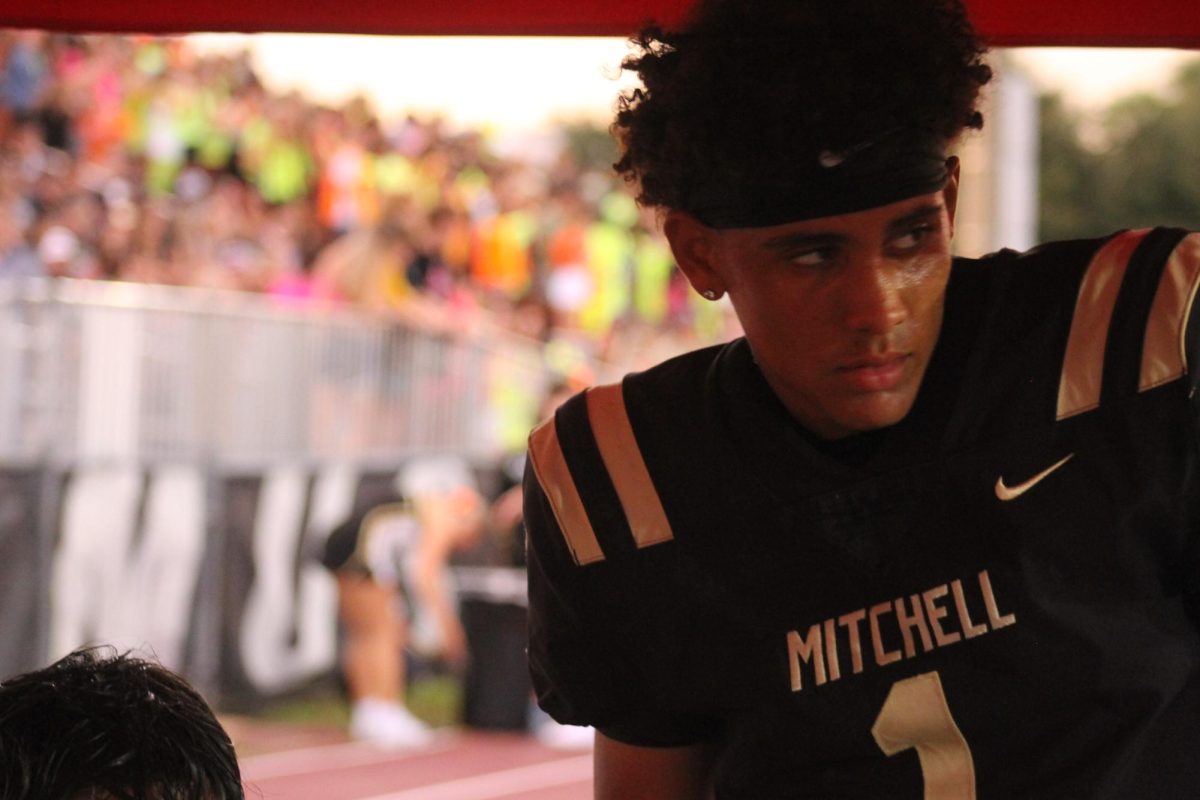

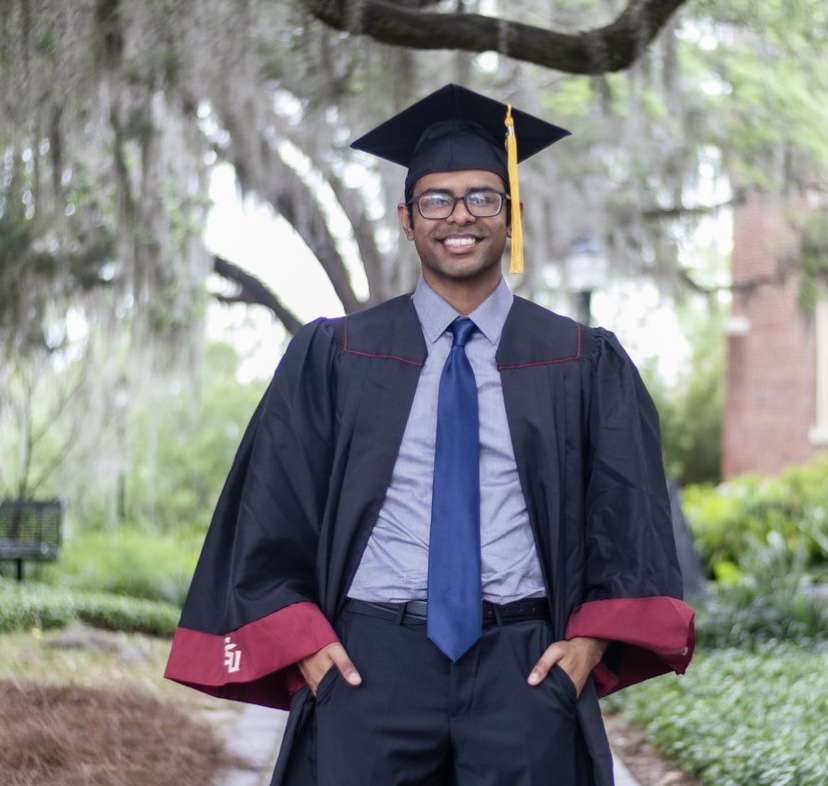

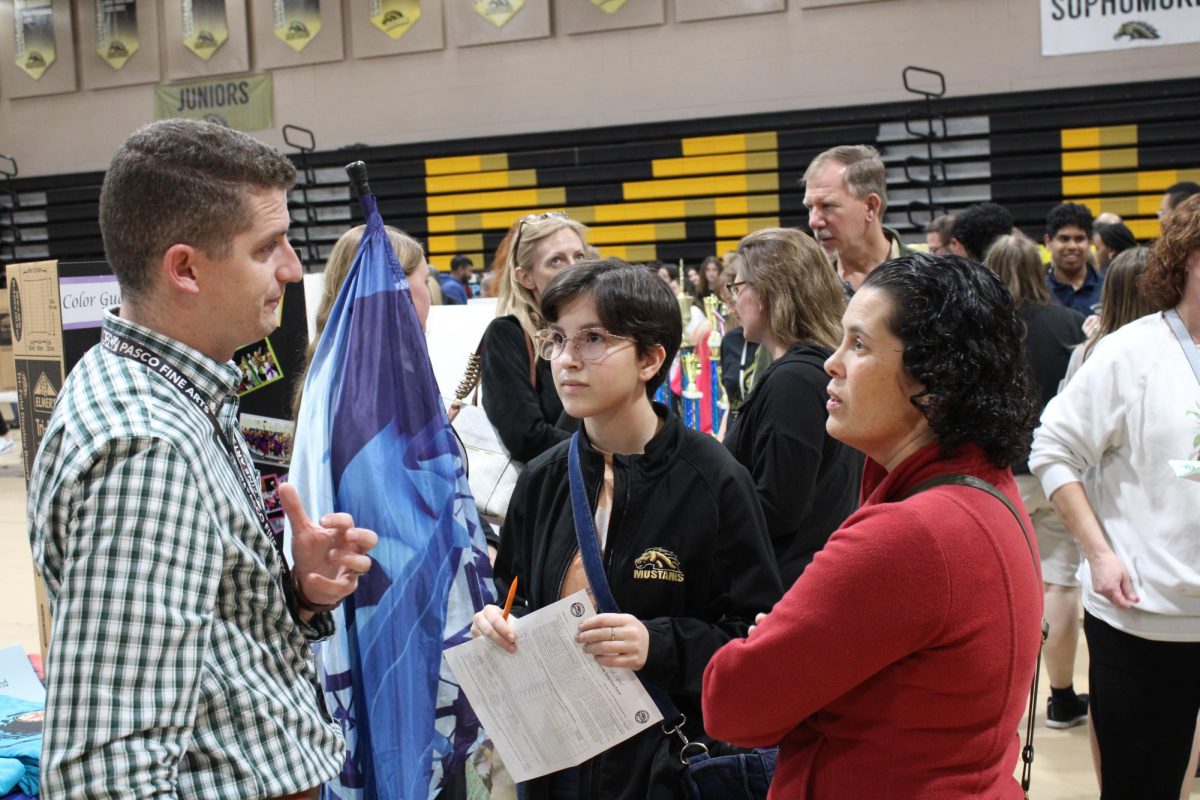
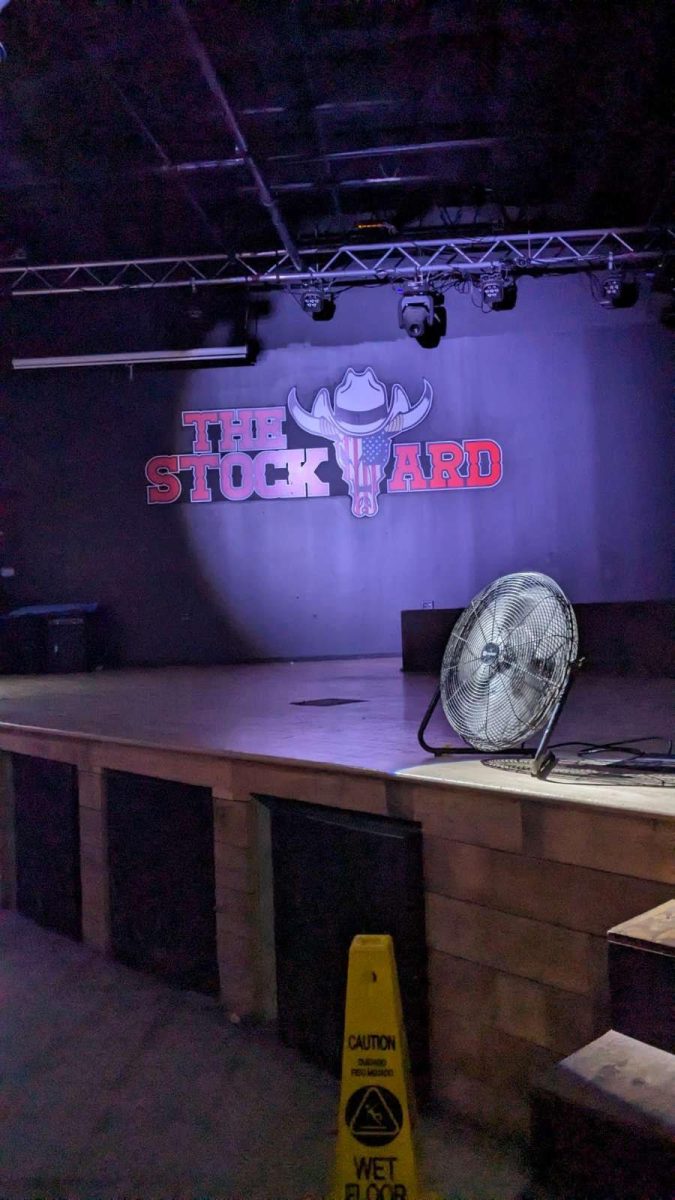
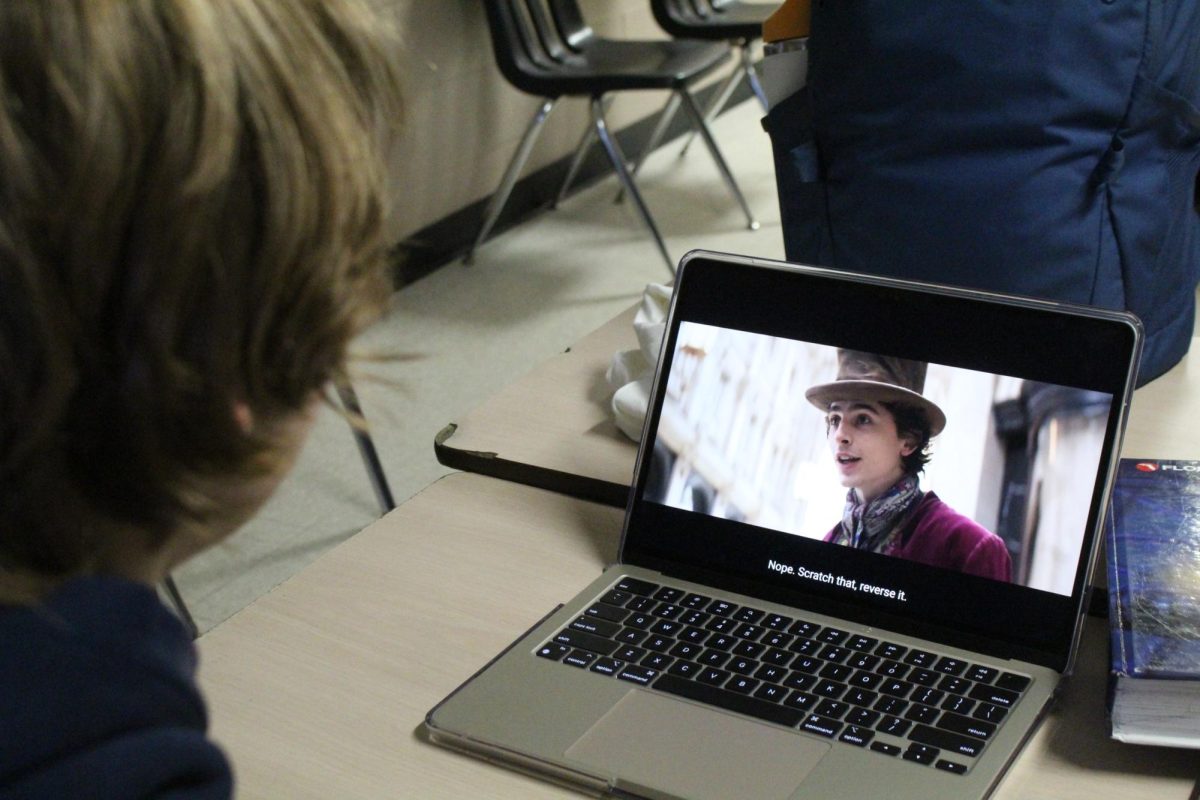
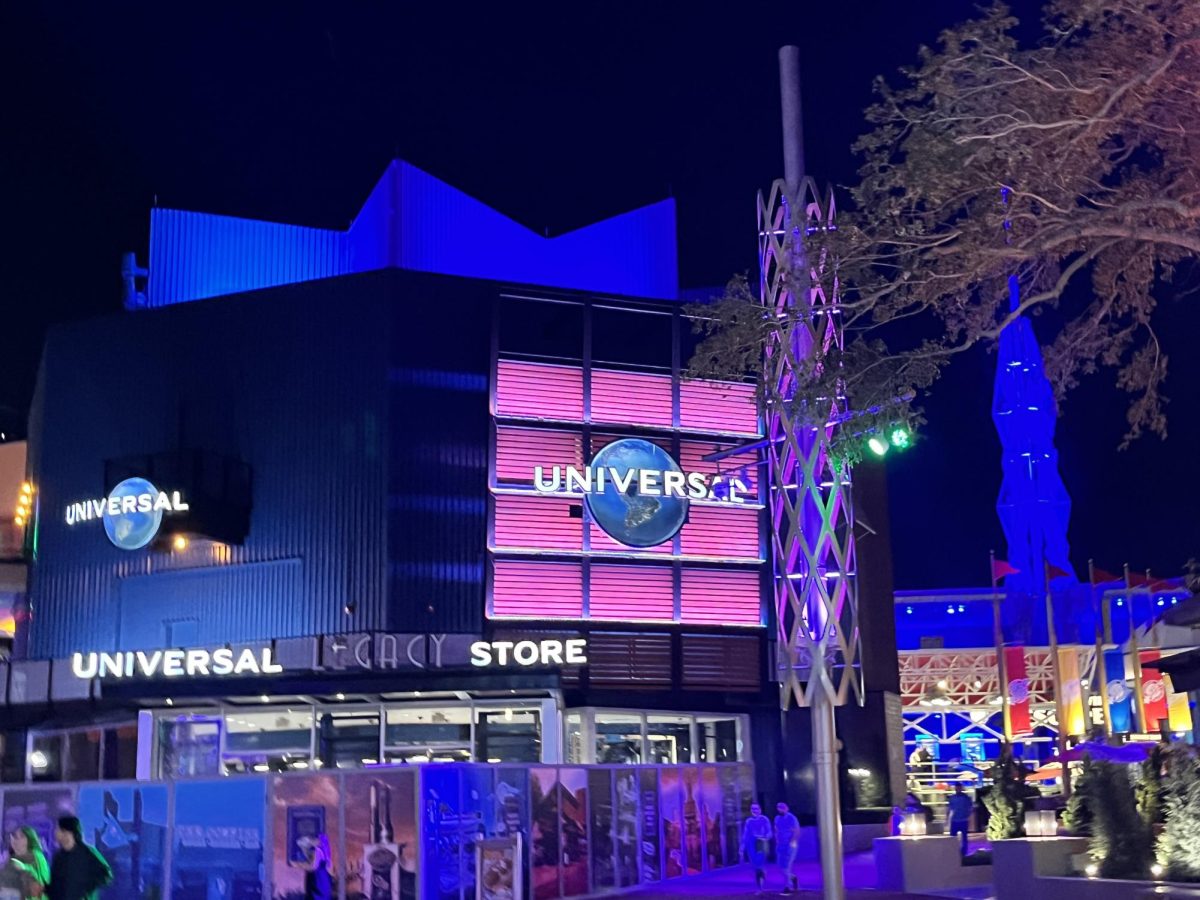

![Colin McRaven (24) prepares to pitch the ball to an Anclote batter during the Varsity pre-season game.I like striking people out, since its fun. The game against Anclote was pretty easy because they were less talented than our team and [I think] we were better than them in every aspect, Colin McRaven (24) said.](https://jwmhshoofbeat.com/wp-content/uploads/2024/03/IMG_1538-1200x928.jpg)


